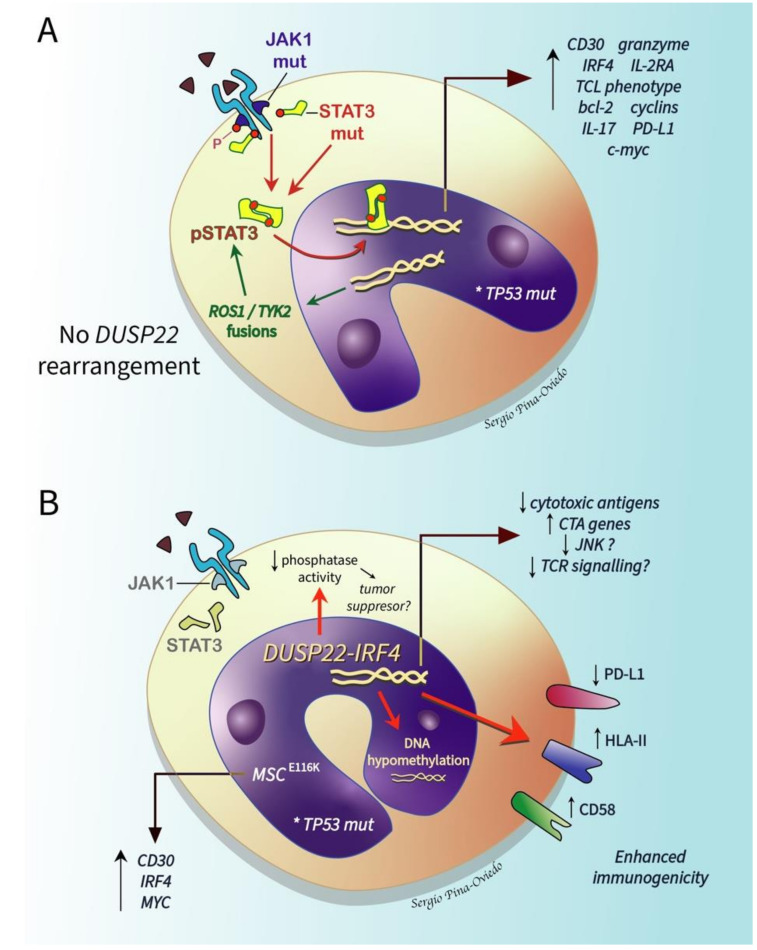Figure 9.
Molecular pathogenesis of systemic ALK- ALCL. (A) Mutations (mut) of JAK1 and/or STAT3 as well as the co-mutation of JAK and STAT have been implicated in the pathogenesis of this lymphoma. These mutations result in the constitutive activation of STAT (phosphorylated STAT; pSTAT3) that translocates to the nucleus and induces multiple genes resulting in the expression/activation of the molecules listed and of a T-cell lymphoma (TCL) phenotype Additionally, chimeric fusion genes with concomitant transcriptional and kinase activity (ROS1, TYK2) are also capable of sustaining the ALCL phenotype via pSTAT3. The activation of the JAK/STAT pathway is only found in cases without the DUSP22 rearrangement. (B) ALK- ALCL with DUSP22-IRF4 rearrangement/t(6;7)(p25.3;q32.3) is associated with downregulation of DUSP22 (dual specificity phosphatase 22) and likely its decreased phosphatase activity that may result in tumor suppressor effects that are yet unknown. The DUSP22-IRF4 rearrangement has been associated with a decreased expression of cytotoxic molecules, marked DNA hypomethylation, and an enhanced immunogenicity via the overexpression of immunogenic cancer-testis antigen (CTA) genes, HLA class II and CD58, and the downregulation of PD-L1. These mechanisms may contribute to the favorable prognosis seen in this group of ALK- ALCLs. Most DUSP22-rearranged cases also harbor a recurrent mutation in musculin (MSCE116K) that induces the expression of the CD30–IRF4–MYC axis. In vitro studies have shown that DUSP22 has the capacity to suppress TCR-induced activation/signaling and JNK signaling that could also have an effect on the pathogenesis of this lymphoma. In both scenarios, the presence or acquisition of a TP53 mutation (*) confers a bad prognosis.

